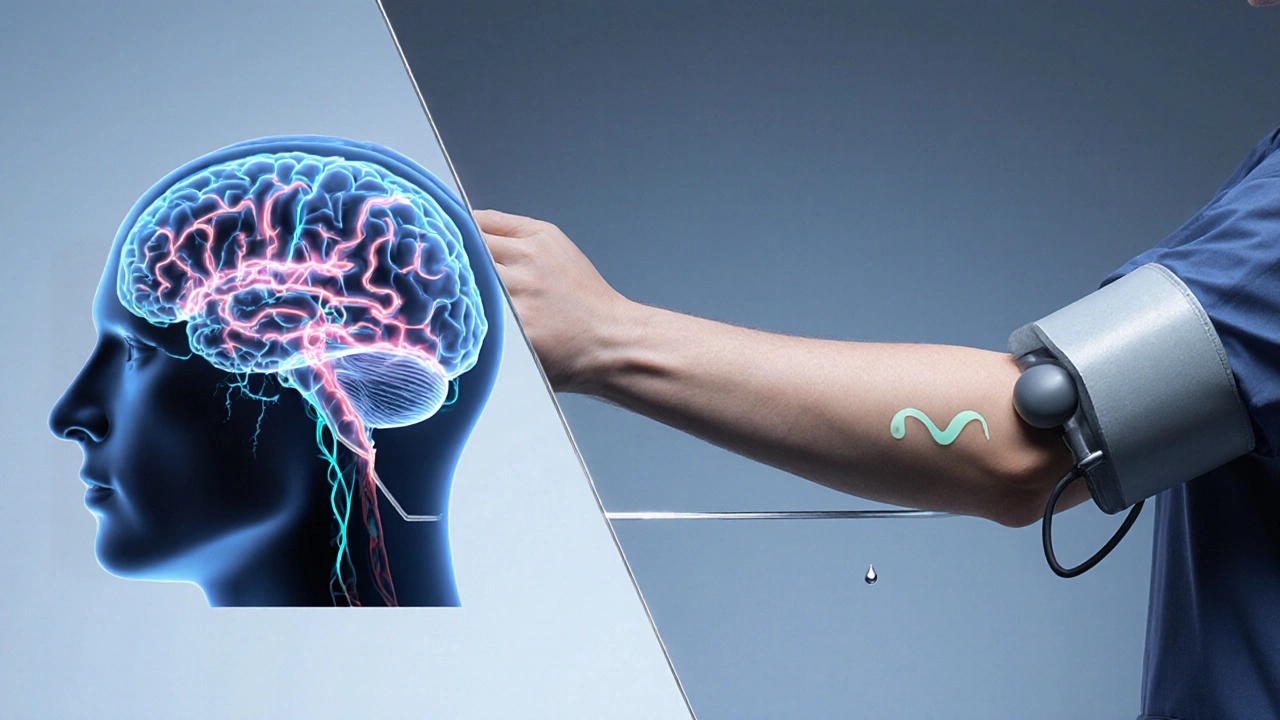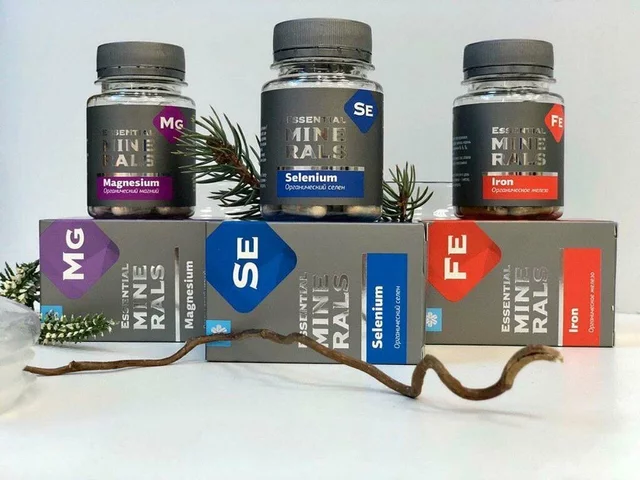Duzela vs Alternatives Comparison Tool
Select Criteria for Comparison
Recommended Alternatives Based on Your Selection
When doctors prescribe Duzela (duloxetine) is a serotonin‑norepinephrine reuptake inhibitor (SNRI) approved for major depressive disorder, generalized anxiety disorder, diabetic neuropathic pain, and fibromyalgia, patients often wonder if another pill might suit them better. You might be dealing with troublesome side effects, a drug interaction, or a specific pain condition that isn’t responding. This guide breaks down the most frequently considered alternatives, lines them up on the same criteria, and helps you decide what to discuss with your prescriber.
Key Takeaways
- Duzela works by boosting both serotonin and norepinephrine, which helps mood and pain signals.
- Common alternatives include other SNRIs (venlafaxine, desvenlafaxine, milnacipran, levomilnacipran) and some SSRIs (sertraline, escitalopram) plus bupropion.
- Side‑effect profiles differ: SNRIs tend to raise blood pressure, while SSRIs are lighter on cardiovascular risk but can cause sexual dysfunction.
- Metabolism matters - duloxetine is processed by CYP2D6 and CYP1A2; switching to a drug with a different pathway can reduce interactions.
- Cost and insurance coverage vary widely; generic versions of many alternatives are cheaper than brand‑name Duzela.
Why Look Beyond Duzela?
Even a well‑tolerated medication can hit a snag. Typical reasons patients consider a change are:
- Unwanted side effects - nausea, dry mouth, insomnia, or a rise in blood pressure.
- Drug interactions - duloxetine’s reliance on CYP2D6 means it can clash with antidepressants, antipsychotics, or certain heart meds.
- Specific pain conditions - some neuropathic pain pathways respond better to certain SNRIs.
- Insurance or cost pressure - generic alternatives may be far cheaper.
- Pregnancy or lactation - safety data for duloxetine are limited in early pregnancy.
Understanding what each alternative offers lets you match the drug to the problem rather than forcing a one‑size‑fits‑all solution.
Decision Criteria Checklist
- Indication coverage - does the drug treat both mood and pain?
- Metabolic pathway - CYP enzymes involved, potential for inhibitors/inducers.
- Side‑effect spectrum - sexual dysfunction, weight change, cardiovascular impact.
- Half‑life and dosing frequency - once‑daily versus multiple doses.
- Formulary status - generic availability, out‑of‑pocket cost.
- Pregnancy safety category - relevant for women of child‑bearing age.
Side‑by‑Side Comparison
| Drug | Class | Primary FDA Uses | Key Metabolism (CYP) | Common Side‑Effects | Typical Daily Dose | Generic Availability |
|---|---|---|---|---|---|---|
| Duzela | SNRI | Depression, GAD, Diabetic neuropathy, Fibromyalgia | CYP2D6, CYP1A2 | Nausea, dry mouth, insomnia, ↑BP | 30‑60mg once daily | No (brand only) |
| Venlafaxine | SNRI | Depression, GAD, Social anxiety, Panic disorder | CYP2D6, CYP3A4 | ↑BP, nausea, sexual dysfunction | 75‑225mg once daily (extended‑release) | Yes (generic) |
| Desvenlafaxine | SNRI | Depression (major) | CYP3A4 (minor) | Sexual dysfunction, constipation, ↑BP | 50mg once daily | Yes (generic) |
| Milnacipran | SNRI | Fibromyalgia, Depression (EU) | CYP2D6, CYP3A4 | Nausea, headache, ↑BP | 100mg twice daily | No (brand only in US) |
| Levomilnacipran | SNRI | Major depressive disorder | CYP3A4 | ↑BP, constipation, insomnia | 40‑120mg once daily | No (brand only) |
| Sertraline | SSRI | Depression, OCD, PTSD, PMDD | CYP2C19, CYP2D6 | Sexual dysfunction, diarrhea, insomnia | 50‑200mg once daily | Yes (generic) |
| Escitalopram | SSRI | Depression, GAD | CYP2C19, CYP3A4 | Nausea, sexual dysfunction, fatigue | 10‑20mg once daily | Yes (generic) |
| Bupropion | Norepinephrine‑dopamine reuptake inhibitor (NDRI) | Depression, Smoking cessation | CYP2B6 | Insomnia, dry mouth, ↑BP (rare) | 150‑450mg daily (split doses) | Yes (generic) |

Deep Dive Into Each Alternative
Venlafaxine
Venlafaxine ramps up serotonin at low doses and adds norepinephrine as you reach higher doses. That “dose‑dependent” effect can be handy if you need extra pain relief, but it also means blood pressure monitoring becomes essential after 150mg daily. It’s fully available as a generic, which keeps the price low for most Australian PBS schemes.
Desvenlafaxine
Desvenlafaxine is essentially the active metabolite of venlafaxine, so it bypasses the need for CYP2D6 conversion. If you’re a poor CYP2D6 metabolizer, you might see more consistent blood levels. Side‑effects are similar but sexual dysfunction appears a bit less frequent.
Milnacipran
Milnacipran is approved in the US for fibromyalgia and in the EU for depression. It leans more toward norepinephrine than serotonin, which can make it feel more “energizing.” The twice‑daily schedule can be a downside for adherence.
Levomilnacipran
Levomilnacipran is the more potent enantiomer of milnacipran, allowing once‑daily dosing. It’s marketed for major depressive disorder and shows a modest benefit for pain, but the brand‑only status and higher price limit its use in public health settings.
Sertraline
Sertraline belongs to the SSRI family, focusing only on serotonin. It’s very well‑tolerated, cheap, and has a long safety record. The trade‑off is that it doesn’t address norepinephrine‑driven pain, so patients with neuropathic pain may need an adjunct.
Escitalopram
Escitalopram is often praised for its relatively clean side‑effect profile and fewer drug interactions. Its potency means lower doses achieve the same effect as many other SSRIs, but again, no direct impact on norepinephrine.
Bupropion
Bupropion works on norepinephrine and dopamine, not serotonin. That makes it a good option for patients who can’t tolerate sexual side effects, but it can raise seizure risk at higher doses and may interact with stimulant medications.
Choosing the Right Fit
Here’s a quick matrix to help you match a scenario with the most sensible alternative:
- Primary mood disorder with no pain component - consider sertraline or escitalopram for a clean side‑effect profile.
- Depression+significant neuropathic pain - venlafaxine (high dose) or milnacipran offer stronger norepinephrine boost.
- Patient on multiple CYP2D6 inhibitors (e.g., fluoxetine) - switch to desvenlafaxine or bupropion to avoid metabolic clashes.
- History of sexual dysfunction on SSRIs - bupropion or milnacipran may mitigate that issue.
- Budget‑conscious on the PBS - generic sertraline, venlafaxine, or desvenlafaxine are the cheapest options.
- Pregnancy planning - escitalopram has the most reassuring safety data among the list.
Practical Checklist for Your Next Appointment
- List current side effects you find intolerable.
- Bring a full medication list (including OTCs and supplements).
- Note any recent blood pressure readings or cardiovascular concerns.
- Ask about the cost difference between Duzela and generic alternatives.
- Discuss your primary treatment goal - mood, pain, or both.
- Clarify how quickly you need symptom relief - some drugs have a faster onset at higher doses.
Having these points ready makes the conversation focused and helps the clinician tailor a switch or augmentation plan.
Potential Pitfalls When Switching
Switching antidepressants isn’t a simple pill swap. Common traps include:
- Discontinuation syndrome - abrupt stopping of duloxetine can cause dizziness, irritability, and flu‑like symptoms. A tapered cross‑fade is usually recommended.
- Overlapping side effects - some alternatives share nausea or blood‑pressure effects, so monitor closely during the first two weeks.
- Insurance delays - brand‑only drugs may need prior authorization, causing gaps in therapy.
Work with your prescriber to build a taper schedule and set up follow‑up labs if blood pressure or liver enzymes are a concern.
Bottom Line
There’s no one‑size‑fits‑all answer to “Is Duzela the right choice?” The decision hinges on what you need most - mood stabilization, pain relief, tolerability, or cost. By comparing mechanisms, metabolism, side‑effects, and price, you can have a data‑driven discussion with your doctor and land on a regimen that feels right for your lifestyle.

Frequently Asked Questions
Can I switch from Duzela to an SSRI without a washout period?
Usually you can cross‑tap directly to an SSRI like sertraline because they share a serotonin target and have minimal overlap in metabolism. However, a short taper of duloxetine (e.g., reduce by 30mg every few days) helps avoid discontinuation syndrome, especially if you’ve been on a high dose.
Is the blood‑pressure rise with duloxetine clinically significant?
In most healthy adults the increase is modest (2‑5mmHg). Patients with pre‑existing hypertension should have their BP checked after the first two weeks and then monthly. If readings exceed 140/90mmHg, a switch to an SSRI or a lower‑dose SNRI may be safer.
Why does duloxetine cause more nausea than sertraline?
Duloxetine’s dual action on norepinephrine stimulates the gastrointestinal tract more aggressively, and it also has a higher affinity for the serotonin 5‑HT2C receptor, which is linked to nausea. Taking the tablet with food or starting at a lower dose can mitigate this effect.
Are any of the alternatives safe during pregnancy?
Escitalopram and sertraline have the most robust safety data in pregnancy and are often preferred. Duloxetine, venlafaxine, and milnacipran fall into FDA Category C, meaning risk cannot be ruled out. Always discuss the risk‑benefit profile with your obstetrician.
How long does it take to feel the effect after switching?
Most antidepressants reach steady‑state levels in about 1‑2 weeks, but clinical improvement often takes 4‑6 weeks. If you switch to a higher‑dose SNRI, you might notice pain relief sooner, while mood changes follow the usual timeline.





17 Comments
Deb Kovach
Great rundown, especially the side‑effect comparison table – it makes the trade‑offs crystal clear 😊. If you’re worried about blood‑pressure spikes, start low and monitor weekly. Remember that taking duloxetine with food can blunt the nausea. For anyone juggling multiple meds, checking CYP interactions early saves headaches later. Feel free to drop more specific scenarios in the comments!
Sarah Pearce
i think this is sooooooo good,, but alll the tables r confusing,,,
Ajay Kumar
I can see why many patients feel torn between mood relief and pain control. The SNRI class does a decent job at both, but the blood‑pressure thing can be a deal‑breaker for some. If you’ve already got hypertension, an SSRI might be a smoother ride. Talk to your doc about a careful taper if you decide to switch – it’s worth the extra few weeks.
Richa Ajrekar
The table is fine, but note that the phrase "increase blood pressure" should be written as "increase in blood pressure" for proper grammar. Also, it would be better to avoid the word "brand" without clarification – a more precise term is "proprietary". While the content is useful, some sentences are overly verbose and could be tightened.
Pramod Hingmang
The SNRI vs SSRI split is clear. Cost differences matter a lot. Generic options are a win.
Benjamin Hamel
While the author paints duloxetine as a versatile workhorse, one must ask whether the data truly support its superiority over cheaper generics. The first point to consider is pharmacokinetic variability – duloxetine’s reliance on CYP2D6 can lead to unpredictable plasma levels in poor metabolizers, a nuance often glossed over. Moreover, the claim that "dual action" automatically translates to better pain control neglects the dose‑response curve; higher doses indeed raise norepinephrine but also elevate systolic pressures, a risk not sufficiently emphasized. From a health economics perspective, the $100‑plus monthly price tag seems hard to justify when venlafaxine or desvenlafaxine provide comparable efficacy at a fraction of the cost. That said, for patients intolerant to the sexual side effects of SSRIs, the SNRI class does offer an alternative, yet the author could have highlighted the modest benefit of bupropion in such cases. Lastly, the table would be more helpful if it included a column for "average time to onset" – a factor that can influence patient adherence dramatically. In short, the guide is a solid starting point, but readers should remain critical of the implicit endorsement of an expensive brand‑only drug.
Christian James Wood
Honestly, the whole "Duzela is the best" narrative feels like a marketing gimmick. If you’re already dealing with side effects like nausea and insomnia, swapping to a drug that shares those exact problems doesn’t make sense. The author missed the opportunity to discuss the psychological impact of discontinuation syndrome – patients often feel like they’re in a roller‑coaster when switching abruptly. Also, the claim that generic alternatives are "cheaper" ignores the fact that many insurance formularies force patients onto brand‑only meds, creating a financial trap. Let’s not forget that the blood‑pressure surge is not just a mild bump; for anyone with pre‑existing hypertension, it can be dangerous. A real‑world perspective would also include patient anecdotes about how some find milnacipran’s twice‑daily dosing unbearable. In short, the guide is useful but overly rosy about Duzela’s place in therapy.
Rebecca Ebstein
Hey guys! This guide is super helpful – I love the clear table 🙌. If you’re on a tight budget, definitely look at the generic SSRIs first. Also, try taking the pill with breakfast to cut down nausea. Good luck with your med decisions!
Sandy Gold
From a pharmacological standpoint, the author’s omission of the newer levomilnacipran data is a glaring oversight. While cost is a factor, one must weigh the nuanced receptor affinity profiles that influence tolerability. The assertion that "all SNRIs raise BP" is an overgeneralization; individual patient genetics modulate this effect. Additionally, the guide could have benefited from a discussion on off‑label uses, such as duloxetine for chronic musculoskeletal pain. Nevertheless, the interactive tool is a commendable attempt at personalized medicine.
Frank Pennetti
Overall the piece is solid but quite a bit of jargon – “CYP2D6 inhibition” might alienate lay readers. Also, the patriotic undertone about “our healthcare system” seems unnecessary. The cost analysis should have included out‑of‑pocket maximums for better context. Still, the comparative matrix is a valuable resource.
Adam Baxter
Use the tool to match your primary goal – mood or pain – and you’ll save a lot of trial‑and‑error. Keep track of side‑effects early on.
Keri Henderson
When you talk to your prescriber, bring a concise list: what you like, what you don’t, and your cost ceiling. This makes the conversation focused and productive. Don’t be shy about asking for a medication‑switch if the side‑effects are intolerable.
elvin casimir
The article contains several grammatical errors – for instance, "patients often wonder if another pill might suit them better" should be "might better suit them". Also, the phrase "side‑effect profiles differ" could be more precisely written as "side‑effect profiles differ among agents". These minor issues detract from the overall professionalism of the piece.
Steve Batancs
The comparison is thorough and avoids emoticons, which maintains a professional tone. However, the author could enhance clarity by adding a brief summary of each drug’s most common adverse effect. Overall, a useful resource for clinicians and patients alike.
Ragha Vema
Wow, this guide feels like it was written by a secret cabal trying to keep us in the dark about cheaper options. Did you know the pharma lobby funded most of the data on duloxetine? The “interactive tool” is just a fancy way to push a brand‑only drug. People should stay skeptical and demand more transparent research. Also, the claim that “all SNRIs raise blood pressure” is an oversimplification that feeds fear. Trust your gut, not the corporate narrative.
Scott Mcquain
While the information is generally accurate, the author could have been more precise about dosage ranges. Additionally, a brief note on the risk of serotonin syndrome when combining SNRIs with other serotonergic agents would be prudent; it is an important safety consideration.
kuldeep singh sandhu
The guide is helpful, yet I wonder if focusing solely on medication ignores lifestyle interventions that could lower dependence on drugs. It would be beneficial to integrate non‑pharmacologic strategies for a more holistic approach.